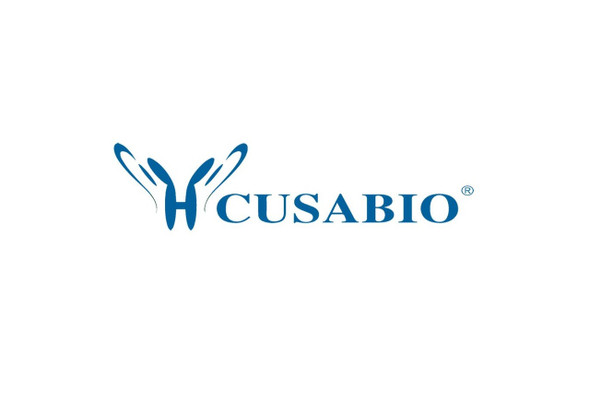Cusabio Mouse Recombinants
Recombinant Mouse Mast cell protease 4 (Mcpt4) | CSB-YP325157MO
- SKU:
- CSB-YP325157MO
- Availability:
- 3 - 7 Working Days
Description
Recombinant Mouse Mast cell protease 4 (Mcpt4) | CSB-YP325157MO | Cusabio
Alternative Name(s): mMCP-4 MSMCP Myonase Serosal mast cell protease
Gene Names: Mcpt4
Research Areas: Cell Biology
Organism: Mus musculus (Mouse)
AA Sequence: IIGGVESRPHSRPYMAHLEITTERGFTATCGGFLITRQFVMTAAHCSGREITVTLGAHDVSKTESTQQKIKVEKQIVHPKYNFYSNLHDIMLLKLQKKAKETPSVNVIPLPRPSDFIKPGKMCRAAGWGRTGVTEPTSDTLREVKLRIMDKEACKNYWHYDYNLQVCVGSPRKKRSAYKGDSGGPLLCAGVAHGIVSYGRGDAKPPAVFTRISSYVPWINRVIKGE
Source: Yeast
Tag Info: N-terminal 6xHis-tagged
Expression Region: 21-246aa
Sequence Info: Full Length of Mature Protein
MW: 27.1 kDa
Purity: Greater than 90% as determined by SDS-PAGE.
Relevance: Has chymotrypsin-like activity. Hydrolyzes the amide bonds of synthetic substrates having Tyr and Phe residues at the P1 position. Preferentially hydrolyzes the 'Tyr-4-|-Ile-5' bond of angiotensin I and the 'Phe-20-|-Ala-21' bond of amyloid beta-protein, and is less active towards the 'Phe-8-|-His-9' bond of angiotensin I and the 'Phe-4-|-Ala-5' and 'Tyr-10-|-Glu-11' bonds of amyloid beta-protein. Involved in thrombin regulation and fibronectin processing.
Reference: "The chymase, mouse mast cell protease 4, constitutes the major chymotrypsin-like activity in peritoneum and ear tissue. A role for mouse mast cell protease 4 in thrombin regulation and fibronectin turnover."Tchougounova E., Pejler G., Abrink M.J. Exp. Med. 198:423-431(2003)
Storage: The shelf life is related to many factors, storage state, buffer ingredients, storage temperature and the stability of the protein itself. Generally, the shelf life of liquid form is 6 months at -20?/-80?. The shelf life of lyophilized form is 12 months at -20?/-80?.
Notes: Repeated freezing and thawing is not recommended. Store working aliquots at 4? for up to one week.
Function: Has chymotrypsin-like activity. Hydrolyzes the amide bonds of synthetic substrates having Tyr and Phe residues at the P1 position. Preferentially hydrolyzes the 'Tyr-4-|-Ile-5' bond of angiotensin I and the 'Phe-20-|-Ala-21' bond of amyloid beta-protein, and is less active towards the 'Phe-8-|-His-9' bond of angiotensin I and the 'Phe-4-|-Ala-5' and 'Tyr-10-|-Glu-11' bonds of amyloid beta-protein. Involved in thrombin regulation and fibronectin processing.
Involvement in disease:
Subcellular Location:
Protein Families: Peptidase S1 family, Granzyme subfamily
Tissue Specificity: Submucosal mast cells. In femoral muscle, detected in myocytes but not in mast cells.
Paythway:
Form: Liquid or Lyophilized powder
Buffer: If the delivery form is liquid, the default storage buffer is Tris/PBS-based buffer, 5%-50% glycerol. If the delivery form is lyophilized powder, the buffer before lyophilization is Tris/PBS-based buffer, 6% Trehalose, pH 8.0.
Reconstitution: We recommend that this vial be briefly centrifuged prior to opening to bring the contents to the bottom. Please reconstitute protein in deionized sterile water to a concentration of 0.1-1.0 mg/mL.We recommend to add 5-50% of glycerol (final concentration) and aliquot for long-term storage at -20?/-80?. Our default final concentration of glycerol is 50%. Customers could use it as reference.
Uniprot ID: P21812
HGNC Database Link: N/A
UniGene Database Link: UniGene
KEGG Database Link: KEGG
STRING Database Link: STRING
OMIM Database Link: N/A









